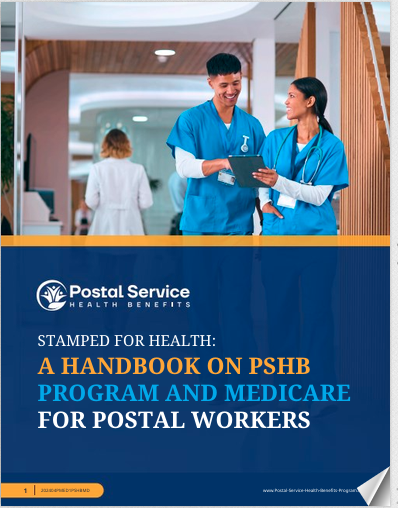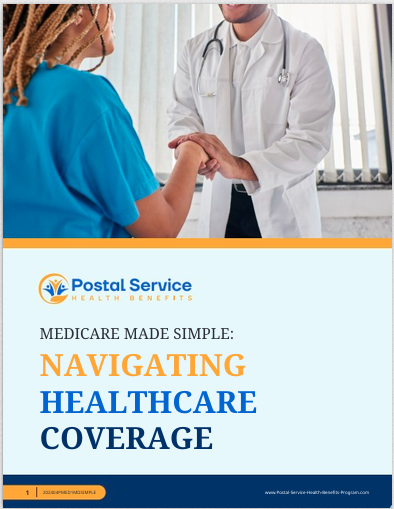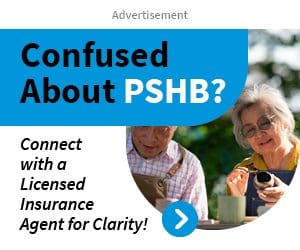Key Takeaways
- Understanding PSHB enrollment periods is crucial for federal employees transitioning to this new healthcare program.
- Marking important dates can help avoid lapses in coverage and ensure you receive timely benefits.
Mark Your Calendar: Important PSHB Enrollment Periods You Need to Remember
As a federal employee or retiree, staying on top of significant healthcare enrollment periods can help you avoid missed opportunities and ensure continuous coverage. The Postal Service Health Benefits (PSHB) Program is designed specifically for postal workers and retirees, offering tailored options to meet their needs. Just like with any healthcare program, knowing when and how to enroll is essential to making sure you and your family receive uninterrupted healthcare benefits. Let’s dive into the key PSHB enrollment periods you need to keep an eye on, and how to navigate them efficiently.
What is PSHB, and Why is It Important?
The Postal Service Health Benefits (PSHB) Program was established to provide postal employees and retirees with healthcare options that are specific to their unique needs. Managed by the Office of Personnel Management (OPM), PSHB mirrors the structure of the Federal Employees Health Benefits (FEHB) Program but is solely focused on those working for or retired from the U.S. Postal Service.
Enrollment periods in PSHB are similar to other federal healthcare programs, but there are nuances you should be aware of, especially if you’re transitioning from other federal benefits. Being well-informed about these timeframes will prevent coverage gaps or penalties.
The Annual Open Season: Your Primary Opportunity to Enroll
One of the most critical periods for enrollment in the PSHB is the Annual Open Season, which occurs every year from mid-November to mid-December. Specifically, the 2024 open season is expected to run from November 11 to December 9, 2024. During this time, postal employees and retirees can make changes to their current health plan, switch plans, or enroll for the first time.
If you’re already part of the PSHB Program, this period is your chance to reassess your current plan and decide whether to stick with it or explore new options that might better meet your needs. If you miss this window, your next opportunity to make changes will be during the next open season, unless you qualify for a Special Enrollment Period.
Why is the Annual Open Season Important?
The annual open season allows you to make critical changes to your healthcare coverage without waiting for a life event. It’s also a time to review any updates or changes to your current plan, which might affect your costs or the services covered. Staying informed during this period is essential to ensure you’re maximizing your healthcare benefits.
Special Enrollment Periods (SEPs): Handling Life Changes
Special Enrollment Periods (SEPs) provide flexibility for individuals who have undergone significant life events. These can include situations like marriage, divorce, the birth of a child, or retirement. SEPs allow you to enroll in or make changes to your PSHB coverage outside of the standard open season, ensuring that you and your dependents have the necessary coverage during life transitions.
Common Life Events that Trigger an SEP
- Marriage or Divorce: If you get married or divorced, you have the opportunity to either add or remove a spouse from your coverage.
- Birth or Adoption of a Child: Adding a new family member is an essential moment to update your health coverage.
- Retirement: For those transitioning from active employment to retirement, a special enrollment period ensures that your healthcare coverage continues smoothly.
- Loss of Other Coverage: If you lose health coverage from another source, such as through a spouse’s employer, this qualifies as an SEP, allowing you to enroll in a PSHB plan.
The timeframe for SEPs typically ranges from 30 to 60 days following the event, depending on the circumstances. Missing this window could mean waiting until the next open season to make adjustments, so it’s crucial to act promptly when a life event occurs.
Initial Enrollment Period: Entering PSHB for the First Time
For new postal employees, the Initial Enrollment Period (IEP) marks your first opportunity to enroll in PSHB. This period typically spans 60 days from the start date of your employment. During this time, you can select from the available PSHB plans to ensure you and your family have healthcare coverage.
What Happens if You Miss Your Initial Enrollment Period?
Failing to enroll during your IEP can lead to delayed coverage and potential financial penalties. It’s essential to make enrollment a priority during this time to avoid any negative repercussions. If you’re unsure about your options, reaching out to HR or a licensed insurance agent can help clarify your choices.
The Role of the Postal Service Retiree: Understanding Medicare and PSHB
As a retiree transitioning into Medicare, it’s essential to understand how your PSHB plan interacts with Medicare. For postal retirees, enrollment in Medicare is not mandatory, but it can help reduce out-of-pocket costs when combined with PSHB benefits.
Coordinating Medicare with PSHB Coverage
When you become eligible for Medicare (typically at age 65), you can choose to enroll in Medicare Part A (hospital insurance) and Part B (medical insurance). Your PSHB plan will act as your primary coverage, with Medicare serving as secondary coverage. This dual coverage can help reduce your out-of-pocket medical expenses, making it a valuable option for many retirees. It’s important to consider your specific healthcare needs when deciding whether to enroll in both Medicare and PSHB.
The Importance of Active Monitoring and Timely Action
Whether you’re an active employee, a new hire, or a retiree, staying vigilant about your enrollment opportunities is critical. Missing a key enrollment period could result in coverage gaps, leaving you and your family without necessary health benefits. Furthermore, late enrollment may come with financial penalties or reduced options, making it even more important to act promptly.
Tips for Staying on Top of Enrollment Periods
- Set Calendar Alerts: Use digital reminders to notify yourself about upcoming enrollment periods, such as open season or special enrollment windows triggered by life events.
- Review Your Plan Annually: Even if you’re satisfied with your current PSHB plan, reviewing it annually during open season can help ensure it still meets your needs, especially if the plan has changed.
- Consult Licensed Insurance Agents: If you’re unsure about which enrollment period applies to you or need guidance on the right plan for your needs, a licensed insurance agent can provide clarity and direction.
Navigating PSHB Enrollment as a Retiree
Retirement brings unique challenges when it comes to healthcare coverage, especially if you’re transitioning to Medicare. Staying informed about how PSHB interacts with Medicare, and understanding the enrollment timelines, can help make the transition smoother.
Continuing Coverage into Retirement
As a postal retiree, you may be eligible to continue your PSHB coverage even after you retire. This is a significant benefit, but it’s essential to remain proactive in managing your coverage, ensuring that you make any necessary changes during open season or special enrollment periods.
Medicare Enrollment Windows and PSHB
If you’re nearing retirement and considering Medicare, it’s crucial to know the Medicare enrollment periods as well. The Initial Enrollment Period for Medicare begins three months before you turn 65 and ends three months after your 65th birthday. Aligning your PSHB and Medicare enrollments can help ensure that you have continuous coverage without gaps or unnecessary expenses. Keep in mind that while Medicare can complement your PSHB coverage, it doesn’t replace it entirely.
Making the Most of Your PSHB Enrollment Opportunities
Understanding the various PSHB enrollment periods—whether it’s open season, special enrollment periods, or your initial enrollment period—can significantly affect your healthcare coverage. Staying proactive and informed allows you to make the best decisions for your situation, ensuring that you and your family have the coverage you need, when you need it.
Your Next Steps for PSHB Enrollment
To avoid missing critical deadlines, it’s essential to be aware of all the enrollment periods that apply to you. If you’re uncertain about your options or the best path forward, reach out to a licensed insurance agent who can offer guidance. Remember, timely action ensures that your healthcare coverage remains intact without unnecessary gaps.
Staying Ahead of the Curve: Managing Your PSHB Coverage
Keeping track of your Postal Service Health Benefits enrollment periods is key to ensuring continuous coverage and maximizing your benefits. From annual open season to special enrollment periods triggered by life events, it’s vital to stay informed and proactive. Whether you’re new to PSHB, nearing retirement, or already a retiree, timely action is your best tool for securing the healthcare benefits you need.
Contact Information:
Email: [email protected]
Phone: 8135553456







